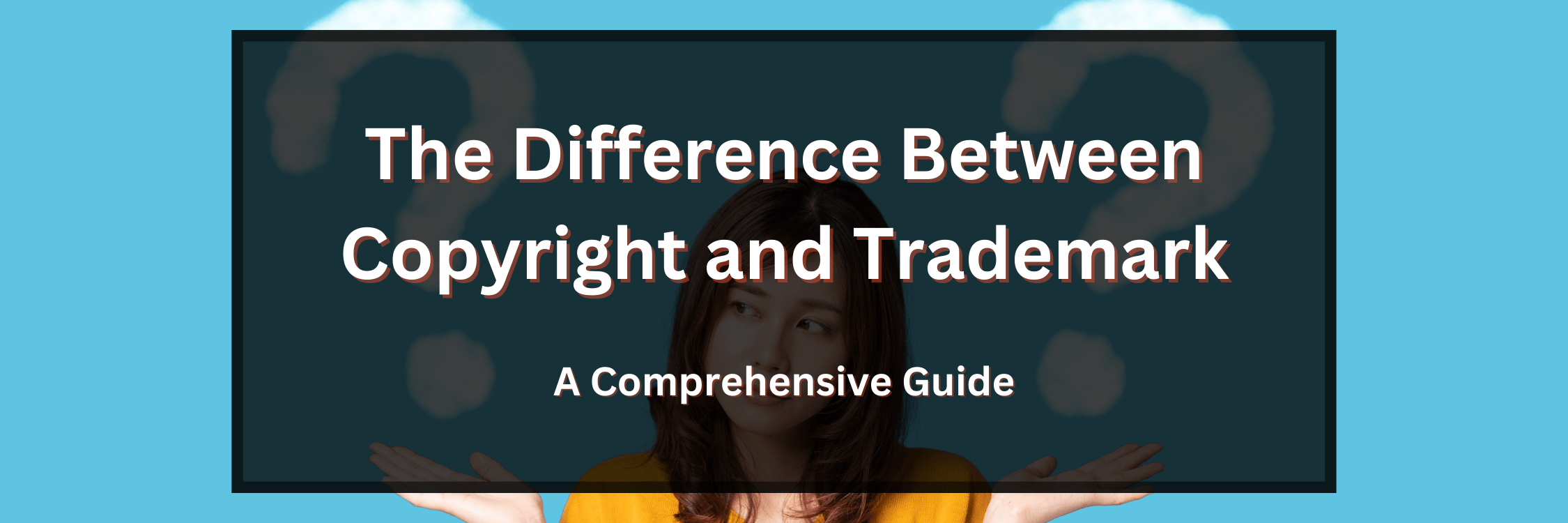In the dynamic landscape of startups, where innovation and brand identity are the currencies of success, understanding the nuances of intellectual property protection is paramount. Two pillars of this protection—copyright and trademark—often intertwine but serve distinct purposes. This comprehensive guide aims to unravel the intricacies, providing startups with a clear understanding of the differences between copyright and trademark. By navigating these distinctions, startups can make informed decisions, safeguarding both their creative works and brand identity effectively.
Copyright vs. Trademark: Foundations of Distinction
- Nature of Protection:
- Copyright: Primarily safeguards original works of authorship, including literary, artistic, and musical creations. It grants exclusive rights to reproduce, distribute, perform, and display the work.
- Trademark: Protects symbols, names, phrases, and distinctive features that identify and distinguish goods or services in the marketplace. It focuses on preventing consumer confusion.
- Scope of Protection:
- Copyright: Provides protection against the unauthorized copying of original works. It extends to a broad range of creative expressions but does not prevent others from creating similar works independently.
- Trademark: Guards against the use of similar marks that could lead to confusion in the marketplace. It aims to protect the distinctive identity associated with a specific brand.
When to Choose Copyright Protection
- Creative Works:
- Literary Works: Books, articles, and written content.
- Artistic Creations: Paintings, illustrations, and graphic designs.
- Musical Compositions: Original musical works and compositions.
- Benefits of Copyright:
- Automatic Protection: Copyright protection is automatic upon the creation of an original work.
- Exclusive Rights: Grants exclusive rights to the creator, allowing control over the use of the work.
- Duration of Protection: Generally lasts for the creator’s lifetime plus 70 years.
- Limitations of Copyright:
- Independent Creation: Copyright does not prevent others from independently creating similar works.
- Functional Elements: Does not protect functional elements of a work, only its creative expression.
When to Choose Trademark Protection
- Distinctive Identifiers:
- Brand Names: Names used to identify and distinguish products or services.
- Logos: Graphic symbols or designs that represent a brand.
- Slogans: Catchphrases or memorable expressions associated with a brand.
- Benefits of Trademark:
- Brand Recognition: Establishes a unique identity in the marketplace, fostering brand recognition.
- Preventing Confusion: Protects consumers from confusion by ensuring that similar marks do not coexist in the same industry.
- Renewable Protection: Trademark protection can be renewed indefinitely, as long as the mark is in use.
- Limitations of Trademark:
- Functional Features: Does not protect functional features of a product or service.
- Generic Terms: Cannot be used to protect generic terms that describe the product or service itself.
Navigating the Legal Landscape
- Registration Process:
- Copyright: Registration is not required for protection but provides additional benefits, such as the ability to sue for statutory damages.
- Trademark: Registration with the appropriate authorities, such as the United States Patent and Trademark Office (USPTO), is necessary to enforce exclusive rights.
- Enforcement Mechanisms:
- Copyright: Enforcement involves legal action against those who copy the protected work without authorization.
- Trademark: Enforcement includes sending cease and desist letters, filing lawsuits, and protecting against potential infringements.
Unique Legal Requirements
- Use in Commerce:
- Copyright: Does not require use in commerce; protection is granted upon creation.
- Trademark: Requires use in commerce to establish rights. Actual use in the marketplace is essential.
- Maintaining Rights:
- Copyright: Rights are maintained as long as the work remains within copyright protection duration.
- Trademark: Requires continuous use and periodic renewal to maintain exclusive rights.
Making Informed Decisions for Startups
- Assessing Intellectual Property Needs:
- Creative Works: If the startup’s assets involve original creative works, copyright protection is crucial.
- Brand Identity: For startups focused on building and protecting a brand identity, trademark protection is essential.
- Legal Counsel and Registration:
- Copyright: While registration is not mandatory, consulting legal counsel can guide startups through the process and provide additional benefits.
- Trademark: Legal counsel is highly recommended, and registration with relevant authorities strengthens the startup’s legal standing.
Conclusion: Empowering Startups in the Intellectual Property Landscape
In the kaleidoscope of intellectual property, where creativity converges with brand identity, startups must navigate the landscape with precision. Copyright and trademark, though distinct, are complementary tools that empower startups to protect their creative works and establish a unique presence in the marketplace. By comprehending the differences and nuances, startups can strategically deploy these protections, ensuring a solid foundation for growth, innovation, and long-term success. As they embark on their journey, armed with a comprehensive understanding of copyright and trademark, startups can confidently carve their path in the competitive business arena, safeguarding their intellectual assets and distinctive identities along the way.





